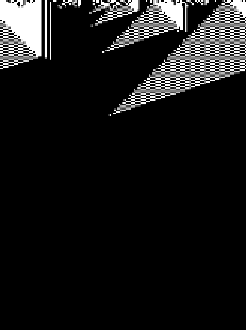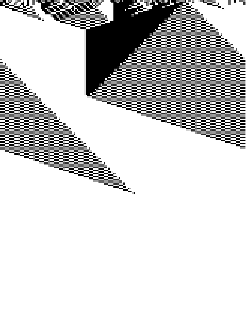Information Technology Reference
In-Depth Information
classified between 3/4 and 17/20 of the ICs received two bonus; and if cor-
rectly classified more than 17/20 of the ICs received three bonus. Also, in
this experiment, individuals capable of correctly classifying only one kind of
situation, although not indiscriminately, were differentiated and had a fit-
ness equal to
n
.
By generation 43 of run 10, the following rule (GEP
2
rule) was discovered
(the sub-ETs are linked with IF):
012345678901201234567890120123456789012
MIuua1113b21cMIM3au3b2233bM1MIacc1cb1aa
(4.28)
This program (GEP
2
rule) has an accuracy of 0.8255 tested over 100,000
unbiased ICs in a 149
X
298 lattice, thus is better than the GEP
1
rule and also
better than the GP rule. Its rule table is shown in Table 4.20. Figure 4.13
shows two space-time diagrams obtained with this new rule.
Figure 4.13.
Space-time diagrams describing the evolution of CA states for the
GEP
2
rule. The number of 1's in the IC (
ρ
0
) is shown above each diagram. In both
cases the CA converged correctly to a uniform pattern.
In this chapter we have learned how to apply the basic gene expression
algorithm to very different problem domains, introducing, along the way, a
varied set of new tools that significantly enlarged the scope of the algorithm.
These new tools include new fitness functions for dealing with classification
problems with multiple outputs; new fitness functions with parsimony




















